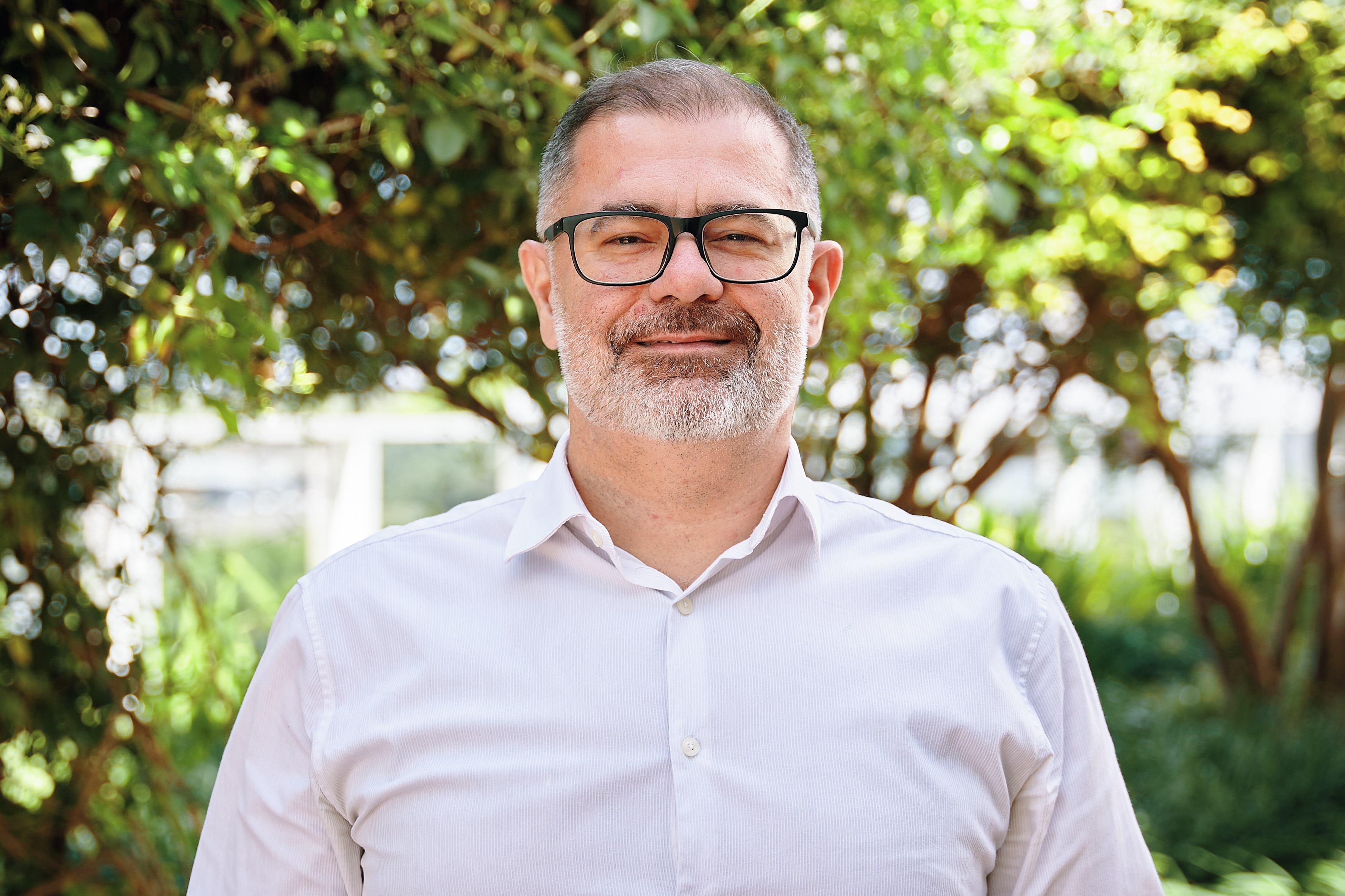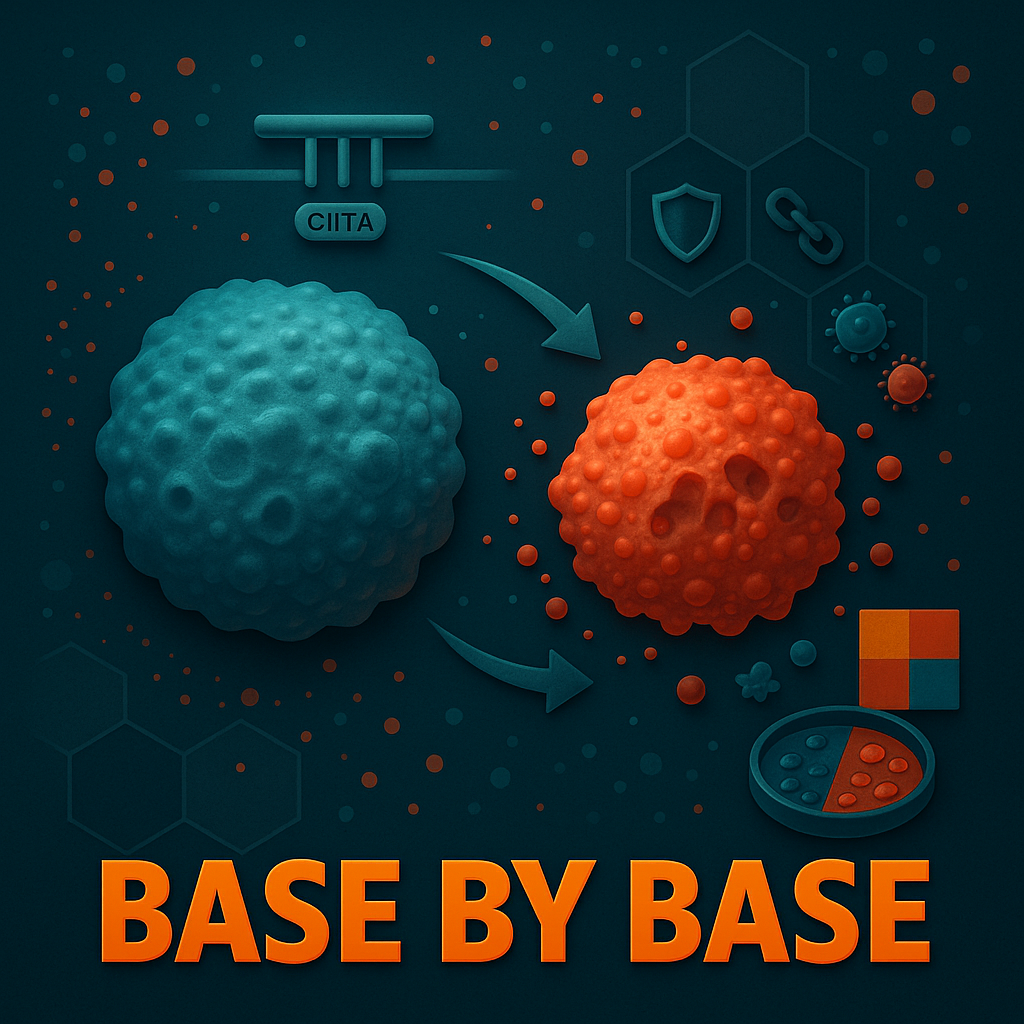Episode Transcript
[00:00:00] Speaker A: Foreign.
[00:00:14] Speaker B: Welcome to Base by Base, the papercast that brings genomics to you wherever you are. Today we are doing a deep dive into Duchenne muscular dystrophy.
Dmd. It's a fatal X linked genetic disease, and if you're familiar with it, you already know how devastating it is. This progressive muscle wasting across the entire body.
[00:00:35] Speaker A: Yeah. It tragically leads to early death, typically because the heart or the respiratory muscles just give out.
[00:00:40] Speaker B: It's a really profound clinical challenge, isn't it? And the need for therapies that actually transform outcomes is just immense.
[00:00:47] Speaker A: Absolutely. But here's something surprising, something fundamental that came out of the sources we looked at. The core physical problem in DMD isn't just the missing protein, dystrophin.
[00:00:57] Speaker B: Right. It's what happens immediately because it's missing.
[00:00:59] Speaker A: Exactly. It's the, you know, the instability and the sheer leakiness of the muscle cel membrane without dystrophin there to support it.
[00:01:06] Speaker B: So the muscle cell, instead of being like a strong container, it's more like a leaky sieve. It just can't hold itself together under normal stress.
[00:01:12] Speaker A: Uh huh. And when it tears, even these tiny micro tears, the cell effectively spills its contents. And that release of the muscle enzyme creatine kinase CK into the blood, that's.
[00:01:24] Speaker B: The big red flag, right? The clinical marker that tells you muscle damage is happening right now.
[00:01:28] Speaker A: Precisely. And once that whole necrotic cycle kicks off, it's incredibly difficult to reverse. But this paper, this work introduces a really radical idea. What if just for a moment, you could set aside the complex genetics and instead physically patch those damaged membranes, seal them up with a synthetic molecule?
[00:01:47] Speaker B: Huh. A physical repair, but delivered chemically.
And the molecule they designed, it looks like a tiny synthetic bottle brush polymer.
[00:01:56] Speaker A: That's the one. It sounds almost like science fiction. Solving this complex genetic structural problem with something that, yeah, resembles a very sophisticated cleaning tool.
[00:02:04] Speaker B: It does sound almost too simple on the surface.
[00:02:06] Speaker A: But the results are absolutely staggering. Which leads us to the big question for today's deep dive. How on earth could this specifically engineered branched synthetic polymer be. Well, and almost unbelievable, 150,000 times more potent than similar linear drug candidates they tested before.
[00:02:26] Speaker B: 150,000 times. Okay, that's, that's the number we need to unpack. You're saying the architecture, the shape is the key?
[00:02:33] Speaker A: It seems to be the architecture is the magic here.
[00:02:35] Speaker B: We are definitely going to get into that structure. But first let's just take a moment, as we always do, to acknowledge the researchers behind this.
[00:02:42] Speaker A: Yes, absolutely. Today we want to celebrate the work of Huda Cohen, Joseph M. Metzger and all the collaborating teams over the University of Minnesota, They've really pushed forward our understanding of how synthetic molecules can stabilize membranes in severe muscle disease.
[00:02:57] Speaker B: Really groundbreaking stuff. Okay, let's set the broader scene a bit more. As we mentioned, DMD is currently incurable. We've seen huge efforts, huge investment in gene therapy trials.
[00:03:06] Speaker A: Right. But many of those trials, despite the promise, have really struggled to meet the key functional milestones they were aiming for.
[00:03:14] Speaker B: Which just highlights this urgent need for different approaches, maybe complementary ones that can act faster or maybe in a different way.
[00:03:21] Speaker A: And if you want to intervene effectively, really effectively, you need to hit that critical target, stopping the membrane instability before all that large scale muscle destruction cascades.
[00:03:32] Speaker B: So stop the leakiness early on.
[00:03:35] Speaker A: Exactly. If you can stop the membrane from leaking so much, you stop those high levels of CK from pouring into the serum. And if you do that, you preserve viable muscle tissue. You keep it functional.
[00:03:46] Speaker B: Now, this idea of using synthetic polymers to patch membranes, it's not entirely out of the blue, is it? People have tried this before.
[00:03:53] Speaker A: No, it's not brand new. There was prior compelling work using linear synthetic polymers, specifically these things called PEO, PPOPEO, Tribloc Polymers. Maybe the most well known is Poloxamer 188 or P188. And they were appealing because, well, crucially.
[00:04:09] Speaker B: They were known to be safe in humans. Non immunogenic. That's a huge plus. Safety was definitely a win. Okay, safe is good.
[00:04:16] Speaker A: But efficacy was the massive hurdle to get any kind of therapeutic effect. These linear polymers, they required really heroic dosing.
[00:04:23] Speaker B: What does heroic mean in this context? We're talking big numbers.
[00:04:26] Speaker A: We are. In lab tests, in vitro, they needed concentrations around 150 micromolar. And in animal models in vivo, you were looking at roughly 460 milligrams per kilogram of body weight.
[00:04:38] Speaker B: 460 milligrams per kilogram.
[00:04:41] Speaker A: Okay, for our listeners who maybe don't deal with drug dosing every day, or why is that dose basically a non starter in the real world?
[00:04:49] Speaker B: Well, just imagine trying to administer nearly half a gram per kg of body weight, maybe multiple times a week, potentially for a patient's entire life.
[00:04:58] Speaker A: Right.
[00:04:58] Speaker B: That translates into really large volumes that need to be injected or infused very frequently. It just makes compliance incredibly difficult. It drives up costs, and it adds a layer of complexity that really stopped T188 from becoming a widespread clinical reality. They needed something orders of magnitude more efficient.
[00:05:14] Speaker A: So the challenge was clear. Keep the safety Profile, but drastically lower the required dose. And the insight was maybe stop thinking in straight lines. Exactly. Start building these highly dense branched structures instead. The bottle brushes.
[00:05:28] Speaker B: Okay, tell us about this novel compound.
[00:05:30] Speaker A: So this is where the real novelty comes in. They engineered a specific synthetic polymer with this unique branched architecture. Instead of just a single simple chain, you imagine a central backbone that's just densely covered in side chains.
[00:05:44] Speaker B: Like bristles on a brush.
[00:05:46] Speaker A: Precisely. Almost like a feather duster or. Yeah, a bottle brush. And these side chains have both parts that like water. That's the polyethylene oxide or peo. And parts that don't like water, the hydrophobic polypropylene oxide or ppo.
[00:06:00] Speaker B: Okay, so water loving and water fearing bits, all packed together in this dense structure. And that density, that branching, is what changes how it interacts with the cell membrane, which is mostly fatty lipids.
[00:06:12] Speaker A: That's the hypothesis, yeah. And it seems to be correct. To test it, they started small, using single skeletal muscle fibers. They took flexor digitorum brevis, or FDB fibers, from the standard DMD animal model, the MDX mouse.
[00:06:24] Speaker B: And these fibers were already showing problems.
[00:06:26] Speaker A: Oh, yeah. They already had marked contractile deficits. They were twitching about 70% less effectively, less shortening than healthy control fibers. Pretty significant dysfunction.
[00:06:35] Speaker B: So what happened when they put the new bottle brush polymer on these sick FDB fibers?
[00:06:41] Speaker A: The effect was immediate. As fast as they could possibly measure it, the contractile problems were corrected, Rescued instantly.
[00:06:48] Speaker B: Wow.
[00:06:49] Speaker A: Yeah, the muscle fibers basically regained their function almost on contact, which is strong proof that the membrane's structural integrity was being restored right away.
[00:06:57] Speaker B: Okay, that's impressive in a dish. But the crucial question is always, does this stop the whole disease progression in a living animal in vivo?
[00:07:05] Speaker A: That is the absolute critical next step. And they designed a really relevant study for this cohalactic regiment. They took newborn mdx mice just one or two days old, P1 or P2.
[00:07:15] Speaker B: So right after birth.
[00:07:16] Speaker A: Right after birth. And they gave him the bottle brush polymer via simple subcutaneous injection just under the skin every four days up until day 21.
[00:07:24] Speaker B: And why day 21?
[00:07:26] Speaker A: Because that's just before the massive necrotic phase. The really bad period of muscle loss typically kicks off in these MDX mice. So this was designed as a truly early preventative treatment.
[00:07:37] Speaker B: Got it. Preventing the damage before it starts. And what about the heart? Since heart failure is often the ultimate cause of death in dmd, they didn't neglect that.
[00:07:46] Speaker A: They also performed an acute cardiac stress test on adult MDX mice.
[00:07:51] Speaker B: How do you stress a Mouse heart.
[00:07:52] Speaker A: They inject a drug called isoproterenol or ISO. It basically forces the heart into a high workload state, which in these vulnerable mice, induces membrane damage in the heart muscle cells.
[00:08:04] Speaker B: And how do you measure that damage?
[00:08:05] Speaker A: One key way is tracking the entry of immunoglobulin G IgG into the heart muscle. IgG is a big antibody molecule. It shouldn't be able to get inside healthy cells. So if you see it inside, that's a clear sign of a severe membrane breach. Serious damage.
[00:08:19] Speaker B: Makes sense. And they also looked at survival.
[00:08:21] Speaker A: Yes. Ultimately, they monitored survival during this stress test using infrared based locomotor monitoring the ultimate functional outcome.
[00:08:28] Speaker B: Okay. And one last piece of the method they use. Computer modeling.
[00:08:33] Speaker A: Right. Molecular dynamics simulations. This was to try and visualize computationally exactly how this complex bottle brush molecule physically docks onto the cell membrane, onto the lipid bilayer, to understand the why at a molecular level.
[00:08:47] Speaker B: Okay, methods covered. Let's get to the findings and let's circle back to that potency number because honestly, it's still kind of hard to believe. The FDB single fiber assay, what concentration worked?
[00:08:59] Speaker A: This is really the jaw dropping moment in the data. The bottle brush polymer achieves statistically significant functional recovery at doses as low as.
[00:09:07] Speaker B: 50 nanometer, 50 nanometer nano nanomolar.
[00:09:10] Speaker A: And they even saw measurable effects down at one nanometer.
[00:09:13] Speaker B: Okay, hang on. Remind us what the linear polymers like P188 needed.
[00:09:17] Speaker A: P188 needed around 150 micromolar. Micro. Micro.
[00:09:21] Speaker B: Okay. Nano versus micro. That's a thousand times difference just in the prefix. So, doing the math, 50 nano versus.
[00:09:27] Speaker A: 150 micro, it works out to be approximately 150,000 times more potent.
[00:09:31] Speaker B: Wow.
[00:09:31] Speaker A: The bottlebrush polymer is 150,000 times more effective at achieving the same functional outcome in that assay compared to the best linear polymer previously tested.
[00:09:40] Speaker B: That's.
That's just an exponential leap. It's not incremental. It completely reframes the potential for this kind of approach, doesn't it?
[00:09:47] Speaker A: It absolutely does. It changes the entire conversation about whether this is clinically viable.
[00:09:52] Speaker B: So with that kind of potency, how did it perform in the living mice? The early intervention study, the clinical outcome.
[00:09:59] Speaker A: Was essentially perfect in that context. The early treatment regimen, starting right after birth, completely prevented the massive spike in serum CK levels that you normally see in untreated mdx mice around T24.
[00:10:13] Speaker B: So no spike in the damage marker?
[00:10:15] Speaker A: None. The CK levels in the treated MDX mice were basically indistinguishable. From those of healthy wild type mice.
[00:10:23] Speaker B: Which means they effectively stopped the muscle destruction cycle right in its tracks before it even got going.
[00:10:28] Speaker A: That's exactly what it implies. It protected all the striated muscles, skeletal muscles in the limbs, the crucial respiratory diaphragm muscle, and implicitly, the heart muscle too, at that stage.
[00:10:37] Speaker B: And did the muscle tissue look healthier?
[00:10:39] Speaker A: Yes. The histology looking at the tissue under the microscope confirmed it. In both the limb muscles, like the tibialis anterior and the diaphragm, the treatment blocked all those classic signs of DMD damage. Things like central nucleation, where the cell nuclei abnormally move to the center of the fiber. It prevented the weird shifts in fiber size distribution you normally see. And importantly, it prevented fibrosis, the scarring, especially in the diaphragm. The treated muscle just looked much healthier, much more like normal young muscle.
[00:11:12] Speaker B: Okay, that's remarkable preventative protection. Now, what about the rescue scenario? The cardiac stress test in adult mice, where the damage is actively happening?
[00:11:21] Speaker A: Right, where the stakes are arguably even higher. In that acute stress test where they push the heart really hard with ISO. Yeah, the bottle brush polymer was incredibly effective. It significantly blocked the entry of that IGG marker into the heart muscle cells.
Remember, igg getting in means severe membrane.
[00:11:37] Speaker B: Failure, so it protected the heart muscle cells, even under duress. And how did P188 the linear one do in that test?
[00:11:44] Speaker A: Well, here's the stark contrast. They tested P188 too. But even when they used it at 3000 times the dose of the bottle brush polymer.
[00:11:53] Speaker B: 3000 times the dose?
[00:11:54] Speaker A: Yes. Even at that much higher dose, p188 provided no significant protection against IgG entry into the heart muscle.
It just didn't seem to work well enough under that acute stress.
[00:12:06] Speaker B: Wow. And the survival data must reflect that difference then.
[00:12:09] Speaker A: It absolutely does. In the saline treated control group of MDX mice undergoing the stress test, the mortality rate was about 50%. Half the mice died. Okay, but in the group that received the bottle brush polymer intervention beforehand, they saw marked protection. Only two deaths out of 17 treated animals. A really significant survival benefit.
[00:12:28] Speaker B: That's a huge difference. And crucially, what about safety signals for this new complex molecule?
[00:12:34] Speaker A: Critically important.
Based on their initial checks, the safety profile looked really good. They measured standard biomarkers for liver and kidney function, Things like bun, creatinine, alp, ast, alt. No changes.
Despite the, you know, complex synthetic nature of this bottle brush molecule, these early indicators suggested a favorable safety profile.
Obviously, much more testing is needed, but that's a Very encouraging start.
[00:12:58] Speaker B: Okay, so we've got this molecule. Looks like a tiny bottle brush or feather duster. It's incredibly potent, seems safe in early tests, and it stabil muscle membranes 150,000 times better than the older linear versions.
Let's talk mechanism. Why, why does the bottle brush shape work so much better?
[00:13:16] Speaker A: It really seems to boil down to how it interacts with the surface of the cell, the lipid bilayer. The branched architecture provides a fundamentally different and much higher affinity interaction compared to a simple linear chain.
[00:13:29] Speaker B: So it's not just bumping into the membrane, it's really sticking to it, or maybe in it.
[00:13:33] Speaker A: Both. It seems it adheres much more strongly and strategically. The computational modeling, those molecular dynamics simulations really help to visualize this.
[00:13:41] Speaker B: Right, you mentioned that flagpole conformation. What does that mean?
[00:13:44] Speaker A: It's a great analogy. The simulations show this very stable arrangement where the water fearing part, the PPO block, actually inserts itself into the outer layer of the membrane. It anchors itself in there.
[00:13:56] Speaker B: Okay, so it digs in.
[00:13:58] Speaker A: Right. And in the water loving parts, the PEO blocks, they orient vertically, sticking straight up from the membrane surface, almost like a dense forest of flagpoles. Or like the bristles of the brush extending outwards, creating this protective layer.
[00:14:11] Speaker B: Ah, okay. So it's not just passively sitting on top, it's actively integrating and changing the surface properties. It's acting like a physical structural patch or stabilizer.
[00:14:22] Speaker A: Precisely. The working hypothesis is that it physically stabilizes the membrane, maybe directly plugging those tiny tears, the delta lesions, that are constantly forming in dystrophic muscle under stress.
[00:14:33] Speaker B: Does the math support that idea of physical patching?
[00:14:36] Speaker A: It does. They did some calculations based on the FDB experiments. They estimated that the total surface area of the bottle brush polymer they applied was something like 700 times greater than the actual surface area of the muscle fiber membrane they were treating.
[00:14:48] Speaker B: 700 times. So it wasn't just a few molecules finding a few holes.
[00:14:53] Speaker A: No. It suggests it was likely forming a dense, almost complete covering, stabilizing the entire structure far more effectively than a linear polymer.
[00:15:03] Speaker B: Could this combination of high potency and this physical stabilization mechanism, it has huge clinical implications, especially now.
[00:15:11] Speaker A: Absolutely. Think about newborn screening for dmd, which is becoming more common. If you can identify affected infants right.
[00:15:18] Speaker B: At birth, you could potentially intervene with something like this before any significant damage occurs.
[00:15:24] Speaker A: Exactly. A fast acting, highly potent membrane stabilizer like this could be applied right at the earliest stages of life.
[00:15:31] Speaker B: And this is where that 150,000x potency really becomes a game changer. For practical use. Right.
[00:15:36] Speaker A: It really does. It revolutionizes the logistics. Because the dose needed is potentially so small, therapeutic levels might actually be achievable with small volume subcutaneous injections.
[00:15:46] Speaker B: Like an insulin shot for diabetes.
[00:15:48] Speaker A: Kind of analogous. Yes. Imagine the convenience.
Maybe a routine injection, easily managed at home. That kind of ease of delivery could potentially offer effective lifelong benefit with minimal disruption.
[00:16:01] Speaker B: That's a world away from needing large, frequent infusions, which is often the case for biological therapies.
[00:16:07] Speaker A: A massive improvement, and it opens up possibilities. This could potentially be a standalone therapy. You're essentially using a synthetic molecule to chemically perform the structural stabilization job that the missing dystrophin protein should be doing.
[00:16:23] Speaker B: Chemically replacing the protein's function. Or, and this is where my mind goes, what about combining it with other approaches?
[00:16:31] Speaker A: That's a really exciting prospect. Imagine using the bottle brush polymer early on to protect the muscle, keep it viable, prevent that early catastrophic damage.
[00:16:38] Speaker B: So you preserve the tissue.
[00:16:39] Speaker A: Right. And then maybe later you introduce gene therapies or cell based therapies. Those more complex treatments might have a much better chance of success because they're working on muscle that hasn't already been ravaged by cycles of necrosis and fibrosis.
[00:16:52] Speaker B: You're giving the gene therapy a healthier environment to work in.
[00:16:56] Speaker A: The potential synergies there are really huge.
But we have to be realistic. There are limitations, of course.
[00:17:03] Speaker B: Always.
What are the next steps?
[00:17:05] Speaker A: Well, clearly more extensive studies are needed. We need to figure out optimal dosing schedules, how long the drug's effect lasts, and get a full picture of its adme, how it's absorbed, distributed, metabolized and excreted by the body.
[00:17:18] Speaker B: And testing in different disease stages.
[00:17:21] Speaker A: Yes, very important. We need to see how effective it is in older animal models where significant muscle damage and fibrosis have already set in.
Does it just prevent or can it also help repair or slow progression in established disease?
[00:17:35] Speaker B: Makes sense. But looking even broader, if these bottle brush polymers are this good at stabilizing membranes in a genetic disease like dmd, what else could they be used for?
[00:17:44] Speaker A: That's a fascinating question. The potential could extend to acquired diseases where acute membrane damage is a major factor. Think about conditions like severe trauma or ischemia or perfusion injury.
[00:17:55] Speaker B: Like the damage that happens after a heart attack or a stroke.
[00:17:59] Speaker A: Exactly. Situations where cells are suddenly put under immense stress and their membranes fail.
If you could rapidly stabilize those membranes with a potent agent like this, the therapeutic potential is potentially massive across many fields.
[00:18:14] Speaker B: Okay, so let's try and boil this down. What are the main take home messages from this deep dive.
[00:18:19] Speaker A: I think the first key insight is by radically changing the physical shape the architecture of a synthetic polymer from a simple line to this complex branched bottle brush, researchers achieved an absolutely unprecedented increase in potency, around 150,000 times as a membrane stabilizer, specifically for dystrophic muscle cells.
[00:18:41] Speaker B: Architecture is potency in this case. And the second insight that when this.
[00:18:44] Speaker A: Super potent molecule is applied early right from birth in the animal model, it's actually sufficient to completely prevent the clinical onset of muscle damage, not just in limb muscles, but across all the critical striated muscles, skeletal diaphragm and heart.
[00:18:58] Speaker B: Preventing the disease before it starts, essentially preserving the tissue?
[00:19:01] Speaker A: Pretty much, yeah. Which leads to, I think, a really profound, thought provoking question for everyone listening, especially those in medicine or materials science.
[00:19:10] Speaker B: What's that?
[00:19:10] Speaker A: What does this really mean for the future of treating complex genetic diseases?
We're now seeing that synthetic materials can be engineered with such precision that they don't just manage symptoms, they can potentially physically replace the structural function of a missing or defective protein. Where does that take us next?
[00:19:29] Speaker B: A powerful question indeed. Thinking beyond biological replacement to physical synthetic replacement this episode was based on an Open Access article under the CC BY 4.0 license. You can find a direct link to the paper and the license in our episode. Description if you enjoyed this, follow or subscribe in your podcast app and leave a five star rating. If you'd like to support our work, use the donation link in the description.
Thanks for listening and join us next time as we explore more science base by base.




